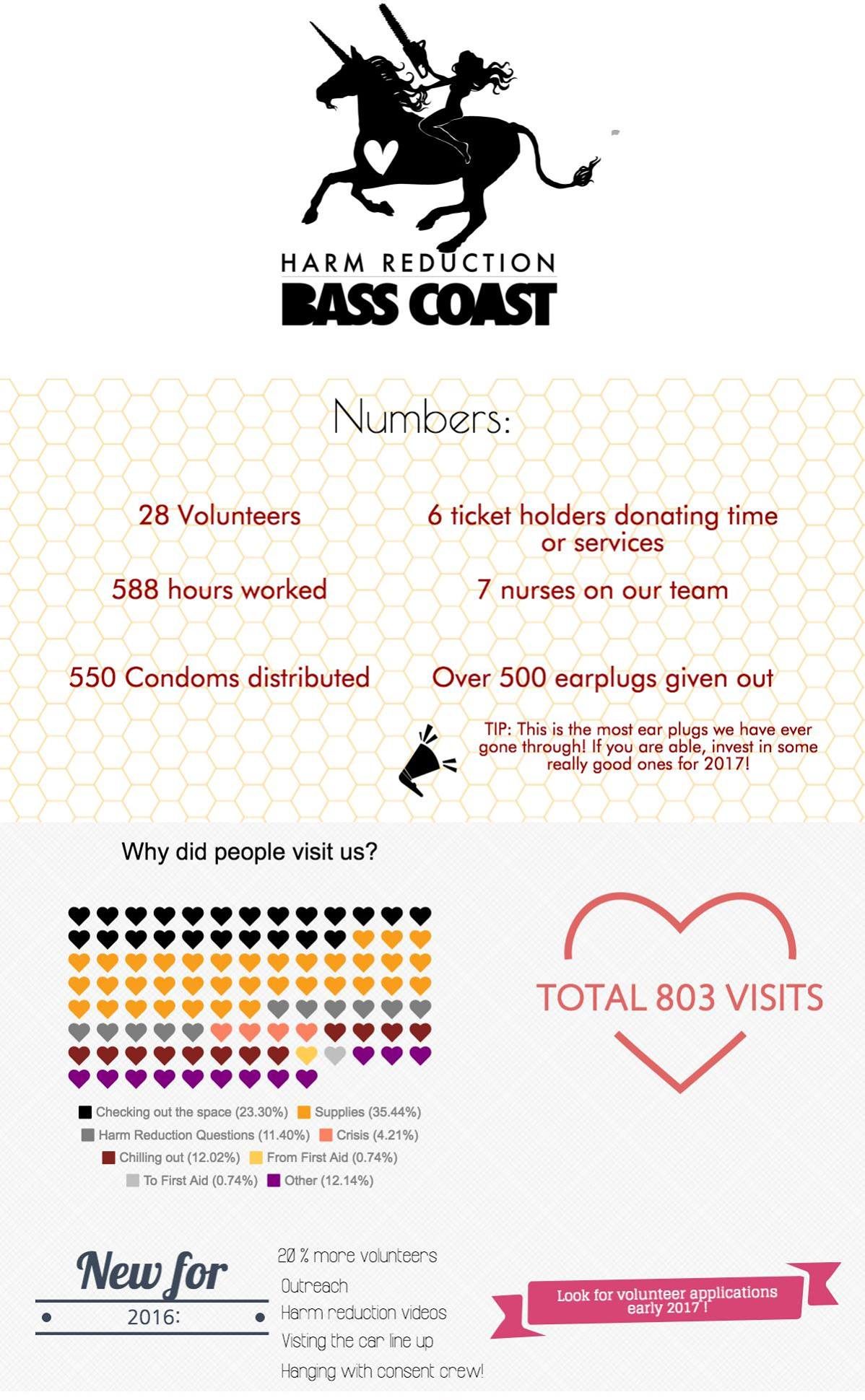The setup at Bass Coast is actually pretty simple and includes their staff of nurses and volunteers who receive ample preparation. The volunteers are trained in harm reduction for the 8 weeks leading up to the festival, so that they arrive prepared. The Sanctuary space (the home base for harm reduction) is open 24 hours a day as soon as gates open. The two things they provide in their Sanctuary space are supplies and information about a whole range of health topics. As well as a hang out spot for people who are feeling overwhelmed or needing to ground themselves. Volunteers also do outreach to the stages and camps and festival grounds, letting people know that they are there to provide any assistance with questions, supplies, or help

Stacey, her team, and the rest of the Bass Coast staff have continued to keep harm reduction in the public eye of their community and beyond. The self and community care skills are always needed. Building on them in the other 51 weeks of the year helps make an engaged, informed crowd for when the event returns. As Bass Coast starts to attract people who are new to electronic music and festivals, the staff want their experiences with Bass Coast to be positive. Providing a crew of more seasoned festival goers who will be welcoming and keep an eye out for them is crucial to the positive atmosphere they strive to create.
Learning how to take care of yourself is a lifelong process, and we all need support in it at some point. It’s that support that Bass Coast aims to provide year round and keeps them at the forefront of the harm reduction movement. We here at DMNW salute Stacey and the rest of the Bass Coast crew for not only creating a safe, educated, and informed event, but a sustainable, conscious, and incredible festival that will keep us returning for years to come.


